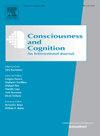Real-world Statistical Regularity Impacts Inattentional Blindness
IF 2
3区 心理学
Q2 PSYCHOLOGY, EXPERIMENTAL
引用次数: 0
Abstract
Does the likelihood of us experiencing inattentional blindness depend on whether the scenes are statistically regular (e.g., probable) or not? Previous studies have shown that observers find it harder to perceive real-world statistical irregularities, such as improbable (statistically irregular) scenes (e.g., scenes unlikely to take place in the real world) as opposed to probable (statistically regular) scenes. Moreover, high inattentional blindness rates have been observed for improbable stimuli (e.g., a gorilla on a college campus). However, no one has directly compared noticing rates for probable and improbable scenes. Here we ask if people are more likely to experience inattentional blindness for improbable than probable scenes. In two large-scale experiments in which one group of participants is presented, on the critical trial, with a probable scene and the other group with an improbable scene, we observed higher rates of inattention blindness for participants receiving improbable scenes than those receiving probable scenes.
真实世界的统计规律性会影响注意力盲区。
我们是否有可能出现注意力不集中的盲目现象,这取决于场景在统计上是否有规律(如可能)?以往的研究表明,观察者更难感知现实世界中的统计不规则现象,如不可能(统计不规则)场景(如不可能发生在现实世界中的场景),而不是可能(统计规则)场景。此外,对于不可能的刺激物(如大学校园里的大猩猩),人们也观察到了较高的无意盲视率。然而,还没有人直接比较过对可能场景和不可能场景的注意率。在这里,我们要问的是,与可能出现的场景相比,人们是否更容易对不可能出现的场景视而不见。在两个大型实验中,一组参与者在关键试验中看到的是可能出现的场景,另一组参与者看到的是不可能出现的场景。
本文章由计算机程序翻译,如有差异,请以英文原文为准。
求助全文
约1分钟内获得全文
求助全文
来源期刊

Consciousness and Cognition
PSYCHOLOGY, EXPERIMENTAL-
CiteScore
4.30
自引率
8.30%
发文量
123
期刊介绍:
Consciousness and Cognition: An International Journal provides a forum for a natural-science approach to the issues of consciousness, voluntary control, and self. The journal features empirical research (in the form of regular articles and short reports) and theoretical articles. Integrative theoretical and critical literature reviews, and tutorial reviews are also published. The journal aims to be both scientifically rigorous and open to novel contributions.
 求助内容:
求助内容: 应助结果提醒方式:
应助结果提醒方式:


